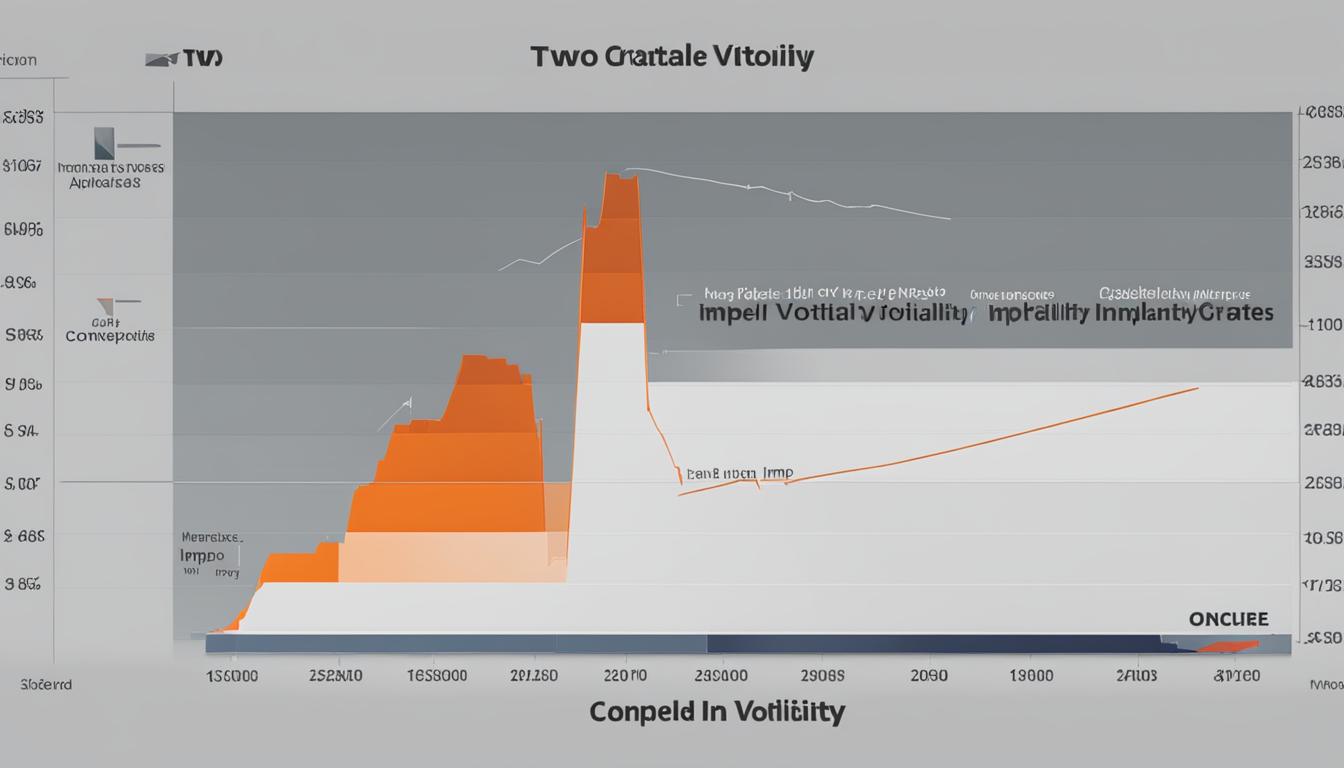
Introduction
Buying on margin is a strategy where traders borrow funds from their brokers to purchase stocks or other securities. This allows them to control larger positions than they could with their own capital alone. While this approach can amplify profits, it also increases the potential for significant losses.
Key takeaway: In this article, we will explore the ins and outs of buying on margin and provide valuable tips for beginner traders to navigate this strategy successfully.
Understanding the risks and rewards involved in margin trading is crucial. It helps set realistic expectations and prepares you for the complexities of this advanced trading technique. Margin trading offers potentially higher returns, but it comes with increased risk due to factors like market volatility and leverage.
This guide is tailored for beginner traders who are curious about this sophisticated investment method. By gaining insights into the mechanics, benefits, and pitfalls of margin trading, you can make informed decisions that align with your financial goals.
Understanding Buying on Margin
Buying on margin involves borrowing funds from a broker to purchase securities. This allows you to buy more shares than you could with just your available capital. The borrowed funds act as a loan secured by the purchased securities and cash in your account.
Key Features
Key features of buying on margin include:
- Leverage: Amplifies both gains and losses.
- Interest Charges: You pay interest on the borrowed amount.
- Margin Requirement: You must maintain a minimum account balance.
How Borrowing Funds Works
When you buy on margin, your broker lends you money to increase your investment position. For instance, if you have $5,000 and your broker offers a 50% margin requirement, you can borrow an additional $5,000 to invest $10,000 in total.
Example:
If stock XYZ costs $100 per share, with $10,000, you can now purchase 100 shares instead of just 50.
Potential Advantages of Buying on Margin
Buying on margin offers several advantages:
- Increased Profit Potential: With a larger investment, the potential for higher returns is significant.
- Portfolio Diversification: Borrowed funds enable investment in various assets simultaneously.
For a comprehensive understanding of market trends and investor sentiment which can aid in smarter investment decisions, it’s worth delving into concepts like open interest in option contracts and options quotes. These insights can provide further clarity and help navigate the complexities of financial trading.
The Working Mechanism of Buying on Margin
Understanding how buying on margin works is crucial for any trader. Here’s a breakdown of the key components:
Loan Value and Leverage Ratio
Loan value in margin trading refers to the amount of money a broker lends you to purchase securities. When you buy on margin, you pay a portion of the purchase price, known as the initial margin, and borrow the rest from your broker.
For instance, if a stock costs $10,000 and your broker requires an initial margin of 50%, you would pay $5,000 and borrow the remaining $5,000.
This borrowing capability significantly affects your leverage ratio, which is the proportion between your own money and borrowed funds. In our example, with an initial investment of $5,000 and a loan of $5,000, your leverage ratio is 2:1.
Higher leverage ratios can amplify potential profits but also increase risks.
Interest Charges and Trading Costs
Maintaining a margin position involves interest charges on the borrowed funds. These interest rates vary depending on your broker and current market conditions. Typically, interest is calculated daily and added to your account balance.
Over time, these charges can accumulate, impacting your overall trading costs.
How Interest Charges Impact Your Trades
Let’s say you’re charged an annual interest rate of 8% on the borrowed $5,000 in our earlier scenario. After one year, you’ll owe approximately $400 in interest.
This cost must be factored into any potential profits or losses from your trades.
How to Make Informed Decisions in Margin Trading
Exploring these dynamics helps you grasp how buying on margin can be both a powerful tool and a risky endeavor.
To enhance your financial acumen further:
- Learn about exercising options to understand the intricacies of this phrase in financial parlance.
- Explore more about option moneyness to gain insights into advanced trading strategies.
Understanding these elements sets a strong foundation for navigating margin trading effectively.
Exploring the Risks Associated with Margin Trading
When you start margin trading, it’s important to understand the risks involved. Buying on margin can be risky in several ways:
Key Risk Factors
- Market Volatility: One of the main risks is market volatility. Prices can change suddenly and dramatically, which can have a big impact on your investments. If stock prices drop sharply, you could face significant losses, especially if you’re using leverage.
- Margin Calls: Another important risk to be aware of is the possibility of a margin call. If the value of your account falls below the minimum level set by your broker, you’ll have to add more money or sell assets to make up for the difference. Failing to meet a margin call can lead to your positions being forcibly sold at prices that are not in your favor.
Unsuitability for Conservative Investors
Buying on margin is generally not suitable for conservative investors like average retirees. This strategy is based on speculation and involves a high level of risk, which may not align with their investment goals and risk tolerance.
- Potential Loss: While buying on margin can increase potential profits, it also means higher potential losses. Conservative investors who rely on steady returns could put their financial security at risk with this higher level of risk.
- Speculative Nature: Margin trading requires constant monitoring and making quick decisions, which may not be ideal for those who prefer a more hands-off approach to investing. This speculative nature requires experience and a higher willingness to take risks.
For traders who want to reduce these risks while still exploring advanced strategies, there are other options available:
- Neutral options strategies: These strategies involve using specific options trading techniques to minimize the impact of market conditions on your trades.
- Rolling options: This strategy involves extending or adjusting your options positions to potentially increase profits while limiting potential losses.
By using these alternative approaches and diversifying their investment portfolio, traders may be able to manage the risks associated with margin trading more effectively.
Regulations and Requirements for Margin Traders
Federal Reserve Regulation T plays a critical role in governing margin activities. This regulation, established by the Federal Reserve Board, sets the guidelines for initial margin requirements and the amount of credit that brokers can extend to traders. The aim is to maintain market stability and protect both investors and financial institutions.
Key Aspects of Regulation T:
- Initial Margin Requirement: When initiating a margin position, traders must deposit a certain percentage of the total purchase price. Currently, Regulation T requires an initial margin of 50%, meaning you can borrow up to 50% of the asset’s purchase price from your broker.
- Maintenance Margin: After establishing a margin position, traders are required to maintain a minimum level of equity in their accounts, known as maintenance margin. If the account’s equity falls below this level due to market fluctuations, the trader may receive a margin call to deposit additional funds or liquidate assets to meet the requirement.
Understanding these regulations is crucial for anyone engaging in margin trading. Compliance ensures not only legal adherence but also helps manage risk effectively.
For those interested in expanding their knowledge on related trading strategies, exploring resources such as Call vs Put: The Ultimate Showdown in Options Trading or From Paper Trading to Real Money Trading: Testing Your Comfort Zone can provide valuable insights.
Navigating broker errors is another essential aspect of maintaining successful trading operations. You can learn more about this by visiting Broker Errors: Types, Examples, Consequences.
Adhering to these regulations not only safeguards your investments but also enhances your overall trading strategy by ensuring you operate within structured and well-defined guidelines.
The Historical Impact of Stock Market Crashes on Margin Trading
Stock market crashes have significantly influenced the popularity and perception of margin trading. During the 1929 Great Depression, excessive margin buying was a major catalyst that exacerbated the market collapse. Many traders had borrowed heavily to invest in stocks, leading to massive liquidations when prices plummeted. The domino effect triggered widespread financial ruin.
The dot-com bubble burst in the early 2000s serves as another critical example. Over-leveraged positions in speculative tech stocks led to severe losses for margin traders. When the bubble collapsed, many investors faced margin calls and were forced to sell their holdings at substantial losses, deepening the market decline.
Why Margin Traders Are Disproportionately Affected During Market Turmoil
Margin traders are disproportionately affected during periods of market turmoil due to two key factors:
- Market Volatility: High leverage amplifies both gains and losses. Sudden market drops can quickly turn profitable positions into significant liabilities.
- Margin Calls: Brokers demand additional funds or collateral to cover potential losses, often forcing traders to liquidate assets at unfavorable prices.
Understanding these historical events highlights the inherent risks associated with margin trading. To navigate these complexities effectively, it is crucial to grasp options settlement mechanics and adopt a cautious approach to leverage. This ensures that you have a solid understanding of how contracts are settled and helps you navigate the world of options trading with ease.
Influence of Trading Halts on Options Trading
During volatile times characterized by trading halts, options trading can be greatly influenced. To gain insights into how trading halts impact options trading and mitigate risks effectively, refer to this comprehensive guide on trading halts.
Protecting Your Investments from Broker Scams
Lastly, protecting your investments from potential broker scams is paramount. Broker scams are unfortunately prevalent in the industry and have caused significant financial losses for many individuals. To safeguard your investments and uncover the true nature of broker scams, it is essential to be aware of the worst scams ever revealed. This expose on broker scams offers extensive insights, revealing the worst scams and providing tips on how to keep your investments safe.
Dabbling in Riskier Territory: Buying Options on Margin
Buying options on margin introduces unique characteristics that traders must understand. One critical concept is time decay, which refers to the erosion of an option’s value as its expiration date approaches. This decay can significantly impact your trading strategy, especially if you are holding options for an extended period.
Potential Benefits:
- Leverage: By buying options on margin, you can control a larger position with a relatively smaller amount of capital.
- Flexibility: Options provide various strategies to profit from different market conditions, including bullish, bearish, and even sideways markets.
However, it’s important to note that this approach also comes with heightened risks:
- Increased Volatility: Leveraging into commodity futures options contracts can amplify both gains and losses. These contracts are particularly sensitive to market movements.
- Margin Calls: A sudden drop in the market can trigger margin calls, forcing you to either deposit additional funds or liquidate positions at unfavorable prices.
- Interest Costs: Borrowing to buy options incurs interest charges, which can add up over time and eat into potential profits.
To better understand these complexities and mitigate risks before venturing into buying options on margin, consider exploring these resources:
- How Options Trading Changed In The Last Decades: A Look Back: Explore the evolution of the market with our in-depth analysis on how options trading changed over the last decades. Uncover key trends and changes in the US.
- Differences Between Equity And Index Options: Master the distinctions between equity options and index options for informed investment decisions in the US market.
- From the Past to the Future: Understanding Historical Volatility vs Implied Volatility: Explore the contrast between historical volatility vs implied volatility. Uncover how past market trends and expected fluctuations shape your trading strategy.
Understanding these insights is crucial to developing a solid risk management plan and successfully navigating the world of buying options on margin.
Essential Tips for Beginner Traders Venturing into Margin Trading
Venturing into margin trading requires careful planning and informed decision-making. Here are some practical tips from seasoned traders and financial advisors to help you navigate this complex strategy:
1. Educate Yourself Thoroughly
Before diving into margin trading, ensure you have a solid understanding of the basic concepts and mechanics. Resources such as the RSI Indicator Guide, which unlocks the secrets of the RSI indicator and provides a strategic edge in the market, can provide valuable insights into market strategies.
2. Start Small
Begin with small position sizes to manage risk effectively. This allows you to gain practical experience without exposing your portfolio to significant losses.
3. Maintain a Healthy Margin Level
Always keep an eye on your margin level to avoid margin calls. A good practice is to maintain a buffer above the minimum maintenance margin requirement.
4. Monitor Market Conditions
Stay updated on market trends and news that could impact your investments. Understanding market volatility is crucial for making informed decisions in margin trading.
5. Use Stop-Loss Orders
Implement stop-loss orders to limit potential losses. This automated tool can help protect your investments by selling off assets when they reach a predetermined price.
6. Diversify Your Portfolio
Avoid putting all your eggs in one basket by diversifying your investments across different asset classes. This strategy can reduce risk and enhance the potential for returns.
7. Seek Professional Advice
Consult with financial advisors or experienced traders to get personalized advice tailored to your investment goals and risk tolerance levels.
For more insights into trading mechanisms, consider exploring additional resources like Options Exchanges, which offer detailed information on how various financial markets operate.
By following these tips, beginner traders can better navigate the complexities of margin trading while mitigating risks and maximizing potential rewards.
Conclusion
Buying on margin explained: it can amplify both profits and losses. Approach this strategy with caution and a thorough understanding of its mechanics to navigate potential pitfalls effectively.
Key recommendations for beginner traders:
- Practice responsible risk management: Start with small position sizes when experimenting with margin trading.
- Consider alternative investment approaches: Long-term portfolio building through dollar-cost averaging might be more suitable for those with a lower risk tolerance.
For further insights into strategic tools for investors, you may want to explore put options. Put options are a strategic tool for investors in the U.S stock market. Understanding how this financial mechanism works and its potential perks is crucial for making informed decisions.
Additionally, if you’re considering margin trading, it’s essential to find the right broker that aligns with your trading goals. Comparing different broker types will help you navigate options trading with confidence and find the perfect match for your needs.
By adopting these practices and exploring these resources, you can make informed decisions and manage risks effectively as you venture into margin trading.







